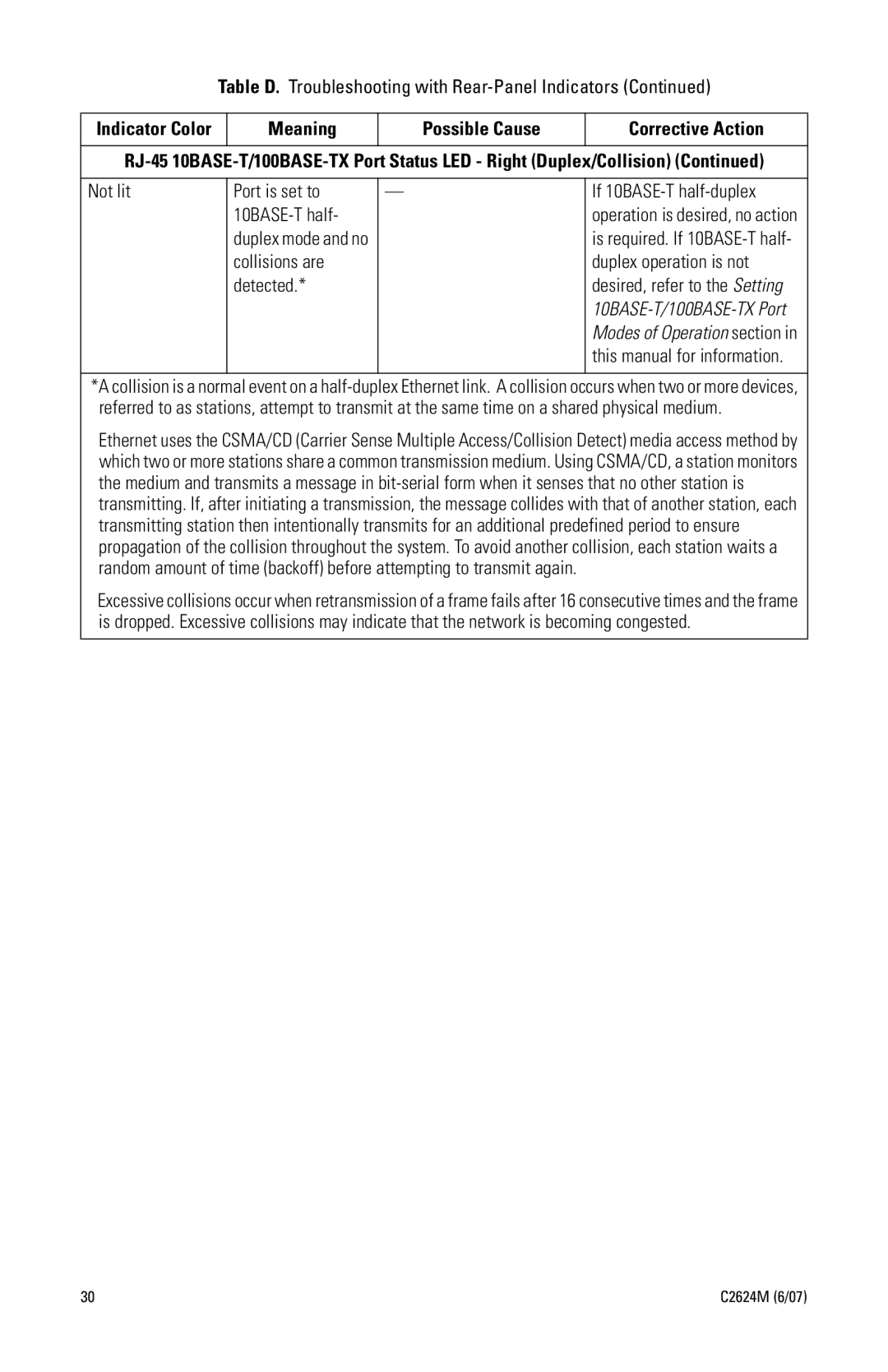Table D. Troubleshooting with Rear-Panel Indicators (Continued)
Indicator Color | Meaning | Possible Cause | Corrective Action |
| | | |
RJ-45 10BASE-T/100BASE-TX Port Status LED - Right (Duplex/Collision) (Continued)
Port is set to 10BASE-T half- duplex mode and no collisions are detected.*
If 10BASE-T half-duplex operation is desired, no action is required. If 10BASE-T half- duplex operation is not desired, refer to the Setting 10BASE-T/100BASE-TX Port Modes of Operation section in this manual for information.
*A collision is a normal event on a half-duplex Ethernet link. A collision occurs when two or more devices, referred to as stations, attempt to transmit at the same time on a shared physical medium.
Ethernet uses the CSMA/CD (Carrier Sense Multiple Access/Collision Detect) media access method by which two or more stations share a common transmission medium. Using CSMA/CD, a station monitors the medium and transmits a message in bit-serial form when it senses that no other station is transmitting. If, after initiating a transmission, the message collides with that of another station, each transmitting station then intentionally transmits for an additional predefined period to ensure propagation of the collision throughout the system. To avoid another collision, each station waits a random amount of time (backoff) before attempting to transmit again.
Excessive collisions occur when retransmission of a frame fails after 16 consecutive times and the frame is dropped. Excessive collisions may indicate that the network is becoming congested.

